Table of Contents
Coming from a bike racing background, I have used clip in shoes since I was in my teens. The extra power and efficiency they offer is hugely beneficial to me, even just commuting around town. I have become used to them completely and now I find it hard riding a bike without them. You can read all about the benefits of being clipped-in HERE.
Here are a list of considerations to make when selecting shoes for touring.
Avoid Clips and Buckles for Shoe Adjustment
All of my racing shoes are incredibly complicated with buckles, tensioning wheels, heel retaining systems – everything you want in a performance shoe which requires a firm fit. The only thing is that shoe adjusters are just another thing that can go wrong.
You can avoid them by sticking to velcro-tensioned shoes.
My Sidi Dragons are the most comfortable cycling shoes I own, but they are not built for extended bike travel.
Find a Shoe with a Tough Rubber Sole
My Sidi ‘city’ shoes are made with hard plastic soles – the last pair got 12 months use until there were no soles left. But perhaps a bigger problem is that plastic soles are incredibly slippery on almost all surfaces. If you can, find a shoe with a hard rubber sole as it will be both durable and grippy.
Some shoes such as the Sidi Bullet use a hard plastic sole, not ideal for bike touring.
Use a Shoe With Adequate Ventilation
The more ventilation, the more comfortable your feet will be and the quicker your shoes will dry. Ventilation is particularly important in regions over 15 degrees celsius, but even if it’s cooler, at least you can make your shoes warmer by wearing waterproof socks and waterproof booties. You certainly can’t cool down an unventilated shoe!
Use a Shoe with a Stiff Sole
With stiffer soles, power transfers better and feels more efficient. But there’s actually a limit to how stiff you want your shoes – too stiff and you won’t be able to walk around comfortably.
Avoid Carbon Fibre Soles
I’ve found that carbon fibre is not as durable around the cleat interface as plastic soled shoes. I’ve worn out lots of pairs of carbon soled shoes, but have never warn out a plastic interface around the cleat.
All of my carbon soled shoes have given way after clipping in and out thousands of times!
Use a Shoe with Adequate Grip for Walking
You’ll need shoes with adequate grip. When you’re bike touring you’ll often be stopping and walking around. Make sure your shoes can grip in all weather conditions and surfaces – it will save the embarrassment. Rubber soles are great.
If You Only Plan to take One Pair of Shoes…
Hybrid walking/SPD shoes are superb. These shoes compromise in both the ability to walk comfortably and ride efficiently compared to having two pairs of shoes, but you can save lots of space and weight. I like to carry the extra 600g to have the best of both worlds, but that decision is up to you.
But wait…
Just recently, I discovered that SPD sandals are the most versatile touring shoe. Why? They dry fast, are more ventilated and are suitable in conditions from freezing to boiling. Yes, you can even wear them comfortably in the snow. How? With waterproof socks and booties, of course.
My sandal article is HERE for all the details. I don’t know if I’ll ever be able to use ordinary shoes again.
My Choices for Extended Touring are…
The shoe with lots of the above features is actually one of the cheapest around. I like the Shimano XC31 because it has a simple velcro design, it isn’t carbon, it has a good rubber sole and it’s relatively well ventilated.
However, just remember that the Shimano SD66 sandals are more versatile than any other shoe. They’re perfect if you’re riding through all kinds of weather, especially wet and warm conditions.


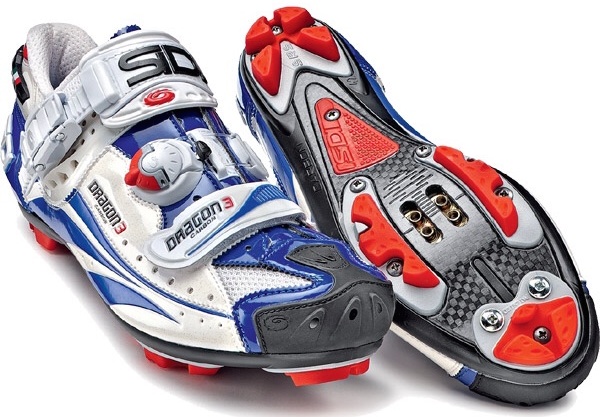
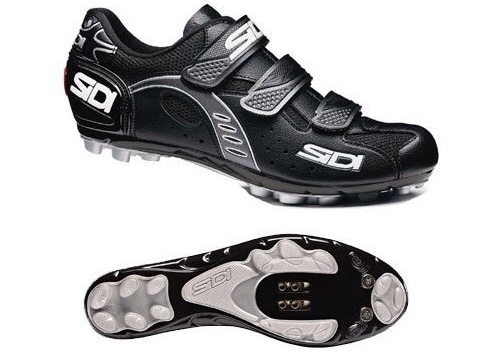
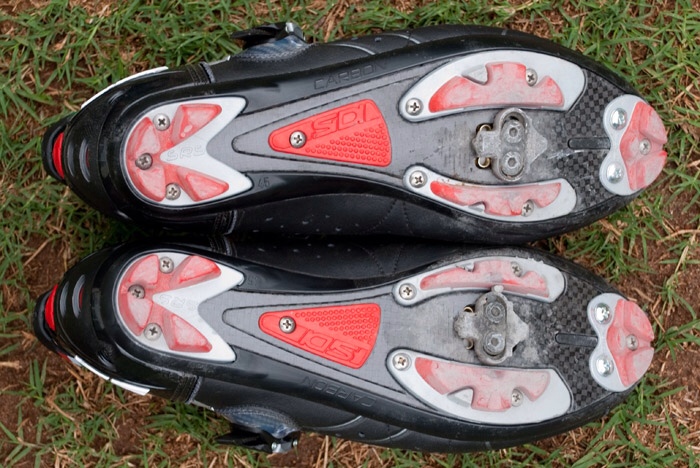
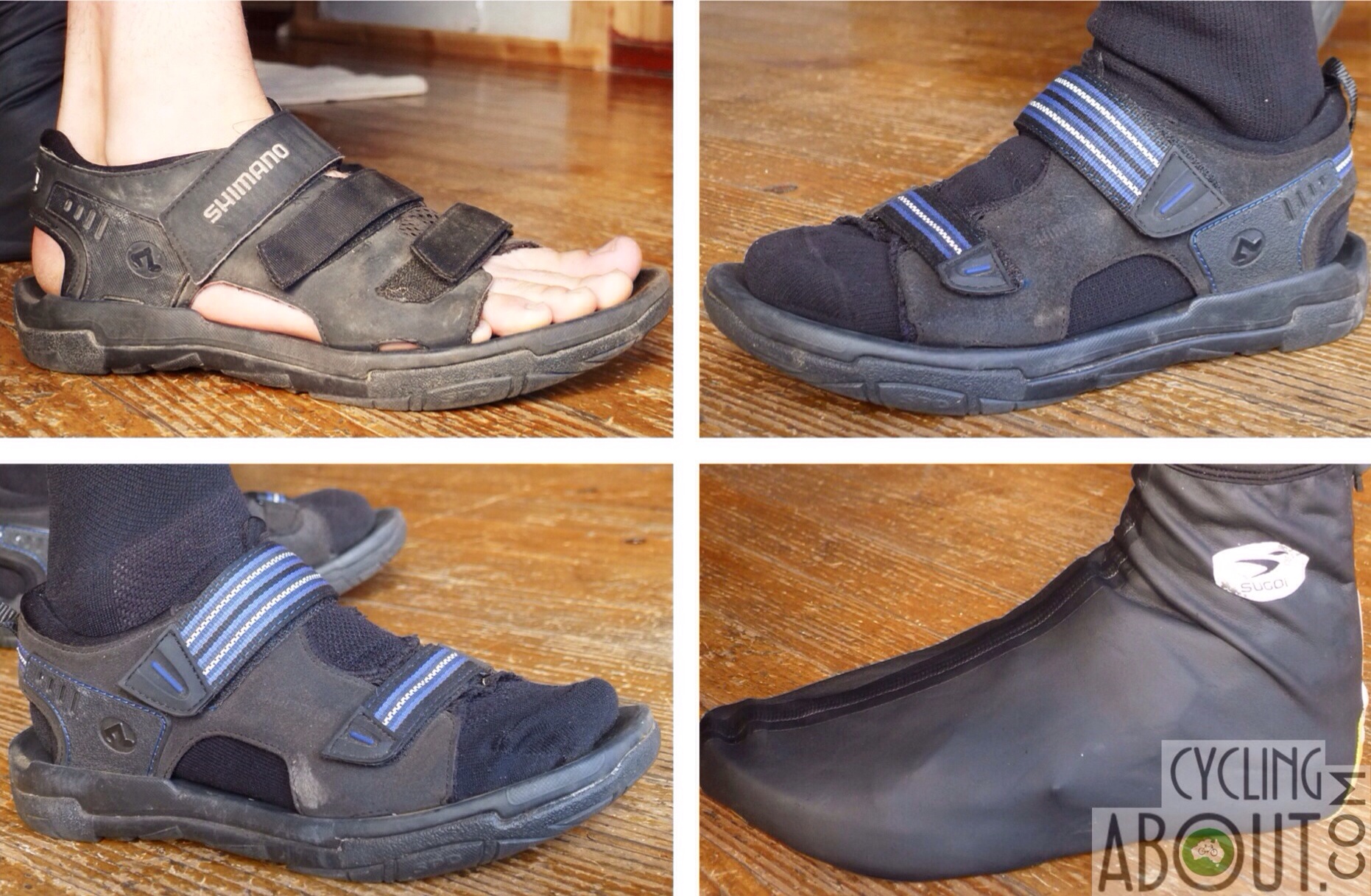


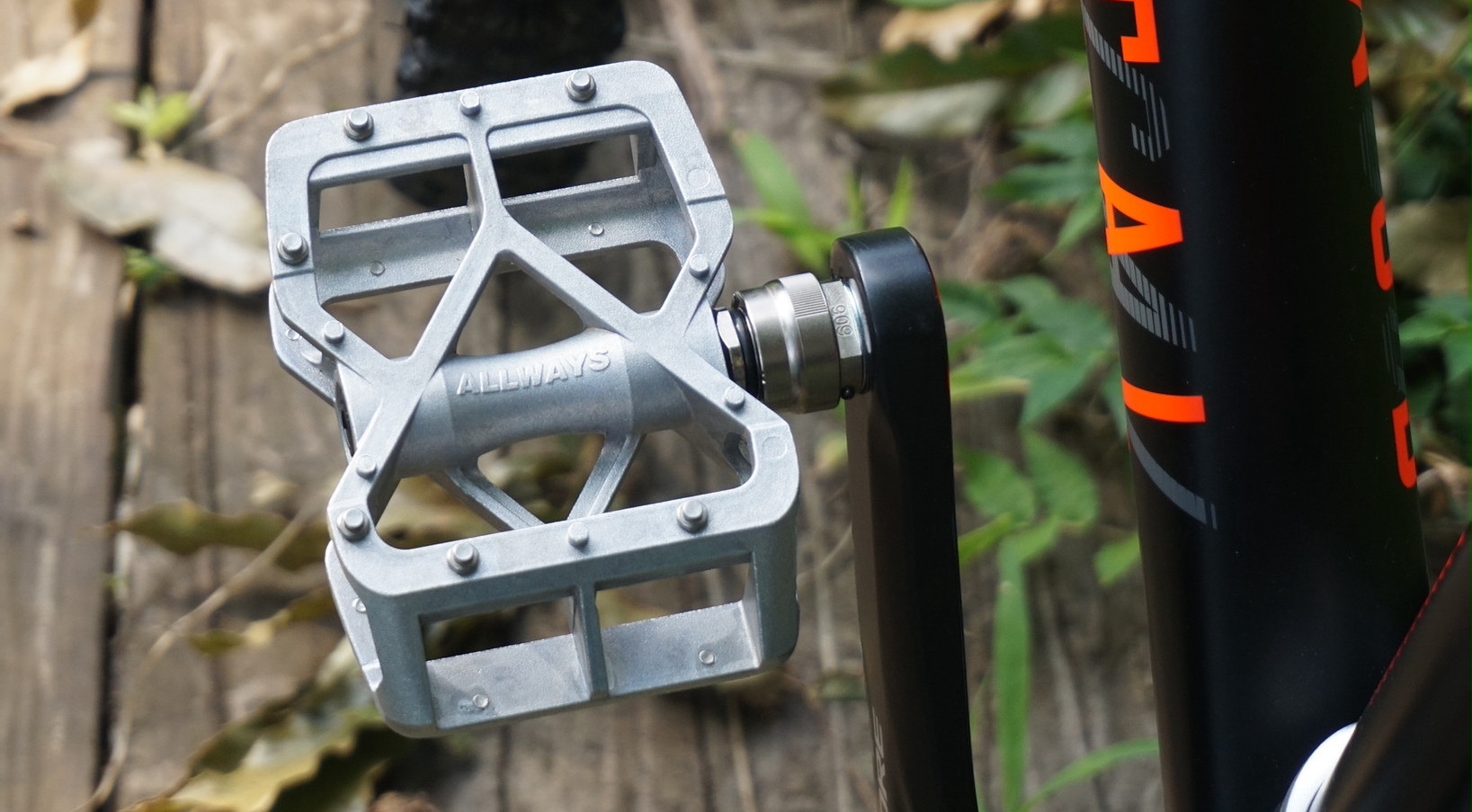
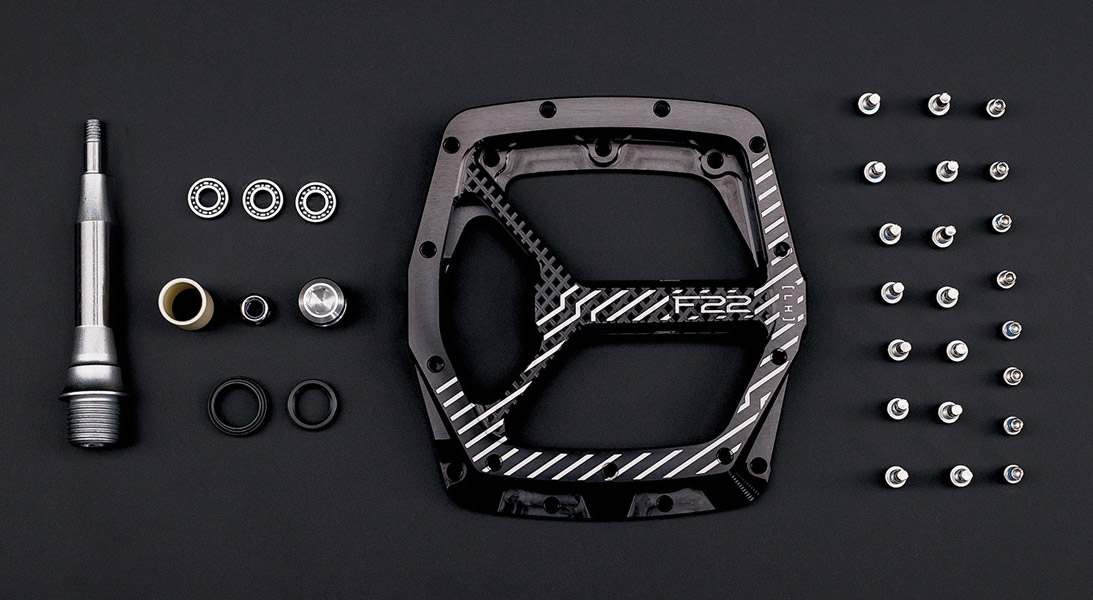
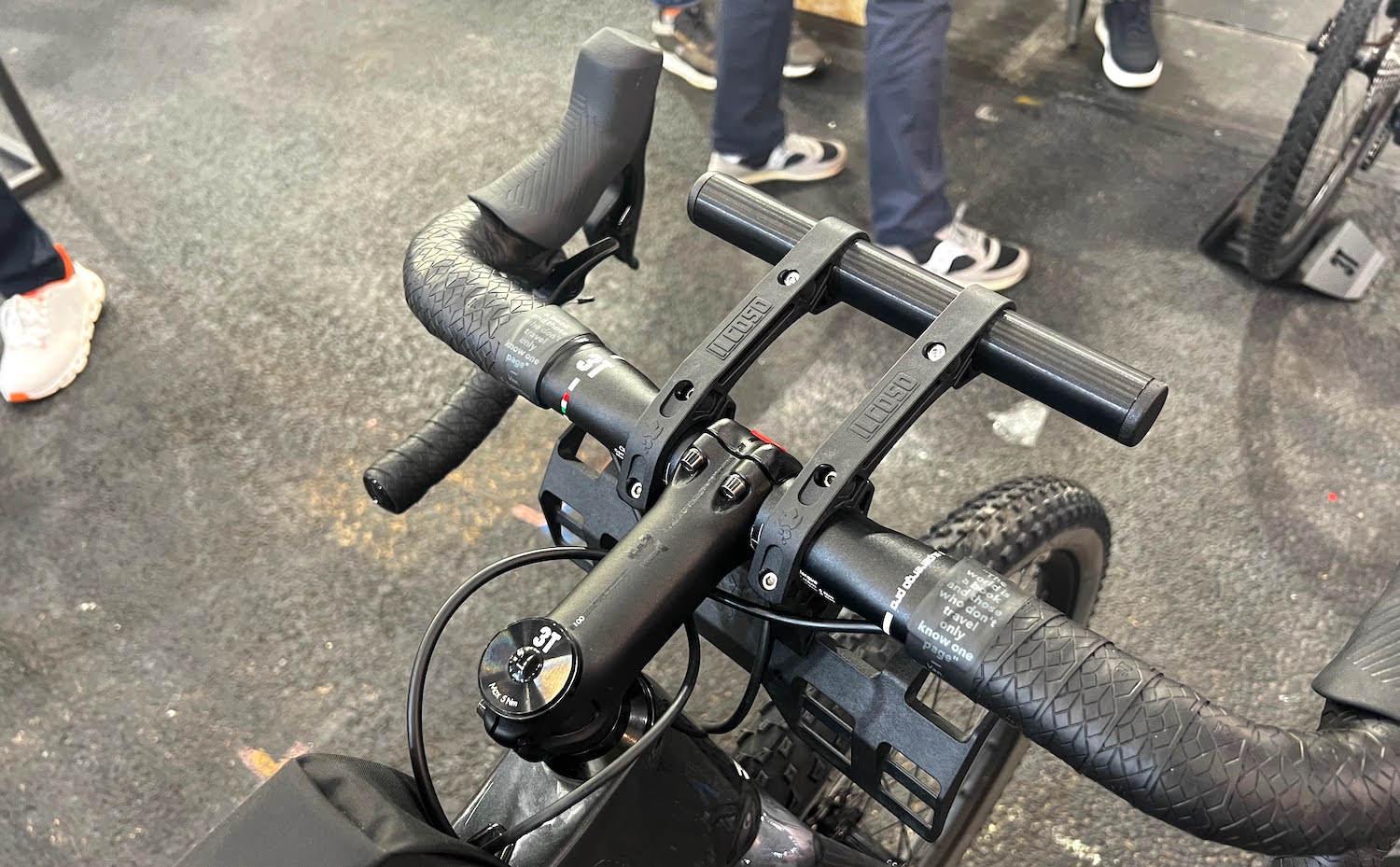

Nice article Alex.
Must agree, I too like my feet fixed to the pedals. Too many years like this to change now.
My pennies worth for a touring shoe, will be what I am presently using; the Gearne Vega. Feet are very well secured, and I have had no problems scurrying up hills or walking. Also, very well made.
Also considering as a back up for longer trips, perhaps something like a Powergrip or Restrap horizontal foot strap.
Take a peek.
http://www.chainreactioncycles.com/Models.aspx?ModelID=35833
http://www.tokyofixedgear.com/products/46-Toe-Straps/4244-Restrap—Horizontal-Foot-Straps/
Thanks Nigel!
I have covered the second part to this article which covers why you should clip in. This picks up the Powergrip and Restrap options! https://www.cyclingabout.com/index.php/2012/05/clip-in-to-your-pedals/Alex
I bought a pair of Shimano MT71 shoes to use while touring. As they are MTB shoes they allow reasonably comfortable walking off the bike, while still being stiff and supportive enough when clipped in and riding. They have a Gore-Tex lining which keeps most water out, however as I found the other week riding home in a rain storm they do nothing to stop water getting in from the opening. Due to the thick MTB grip and vibram sole they are also a bit heavy compared to a road touring shoe. I’ll only be wearing these shoes and a light weight pair of enclosed Sanuk ‘sidewalk surfer’ sandals for general use.
My bike shop didn’t have the MO77’s but I picked up a pair of the MO88’s for $149.99 Canadian. One important difference for the MO88’s is that the top velcro strap is replaced by a buckle. I was a bit apprehensive at first when looking at the shoe (for durability concerns like Alex mentioned) but then I noticed that it was actually an extremely sturdy metal buckle (all the parts looked very solid). It wasn’t made out of a flimsy plastic like what I saw on some other cycling shoes. The MO88’s are the most comfortable cycling shoes I’ve ever tried on. I’m excited to put them to the test!
Great Advice! I used to do a lot of touring and agree with all info presented. Mention of sandal option for 100% coverage.
Thanks for this. I’m getting ready for a tour (haven’t toured for nearly 20 years so this is a big deal) and still have my old shimano spd touring shoes. Tried them against my much newer specialised and the newer shoes were much more comfortable to ride in as they feel lighter and have stiffer soles.
Naturally, they have a plastic sole so are more slippy than your recommended Shimanos – but they look pretty similar to them. I can’t see a model number on them. Are you familiar with these at all?
P.S. I don’t think you can get the MO77s any more. Do you know what’s replaced them?
It looks like it’s called the Shimano XC31.
Wow, those Shimano shoes are probably worth something now! 😉
I owned a pair of those Specialized shoes about a decade ago. They’ll be great for touring! Just bring a second set of shoes for walking…
Thanks for the tip off on the name. The specialised def have plastic soles but I never intended to have them for any real type of walking – literally throw the birkis on as soon as I’m off the bike (I need the arch support). But I’ll check the XC31s too.
I’ve had a look at the XC31 – seems they have a polyurethane sole. Would that be hard or like rubber?
Unfortunately it’s a bit hard to tell without seeing them in person. A lot of bike shops should stock this shoe given it is the base model.
I think I’ll stick with what I’ve got and if I fall on my arse a few times then I’ll look around in France. BTW, now looking at tents too. I read a review of the Mont Moondance. Is that something you’d get, or the MSR Hubba Hubba (which is apparently a little lighter – but only by 300 or so grams).
Have a read through this if you haven’t already: https://www.cyclingabout.com/everything-you-ever-need-to-know-tents-for-bicycle-touring/
I personally prefer the Moondance for its roof vent, liberal use of mesh, 10,000mm floor and colour.
Fair points – I think the colour’s a big thing. There seems to be more mesh on the ’14 Hubba Hubba, but I think the stronger floor might do it for me. I’ll give the Mont guys a call. Thanks again.
The best shoes we have used cycle touring are the Pearlizumi WRX (looks like a running shoe) and the Quoc Pham Urbanite. We only take one pair of shoes so we walk everywhere in them when off the bike. The Urbanite is the best by far with the most recessed cleat and a soft sole for excellent grip, plus it looks like a dress shoe. The WRX has not help up very well.
I agree with the Shimano sandals, the way I found them was from the size needed, 13EEE translates to 49EU and the toe boxes on Sidi Wide shoes,…well let’s just say there wasn’t a shoe on the market that was wide enough. Italians have little narrow shoe lasts to work with I suppose. The toe strap is very accommodating to my width. With neoprene & wool socks cold weather is not an issue, and for shoe covers, I wear a smaller pair of Showers Pass covers under the sandals, no cutout for cleats. Water never gets in and the sandals don’t seem to care.
I’m glad you found a cycling shoe that fits!
How do you find spd cleats for daily distances of around 200km. Do you feel less distributed pressure in soles of your feet? I have been using road shoes for that reason, but I would prefer spd as easier to walk and cleats won’t wear as fast. Would love to hear your opinion and what’s your experience with it.
The shoe sole stiffness will largely determine the distributed pressure to your foot. If you like stiff soles, grab some carbon MTB shoes and you’ll have a hard time feeling the difference to a road shoe. I actually use carbon MTB shoes for the majority of my road riding too.
Thank you very much Alee for helpful advice. Will look into it!
Could you recommend any shoes and pedals Alee? Thank you.
The most comfortable shoes I’ve ever owned were by Sidi. They do a regular and a wide fit too. More recently I’ve been using Bontrager XXX and they’ve been super stiff, but not quite right for my foot shape. You really need to try on some shoes to see what is comfortable for you. I’d say most high-end shoes are in the same stiffness range.
Thanks Alee! Enjoying your books too.